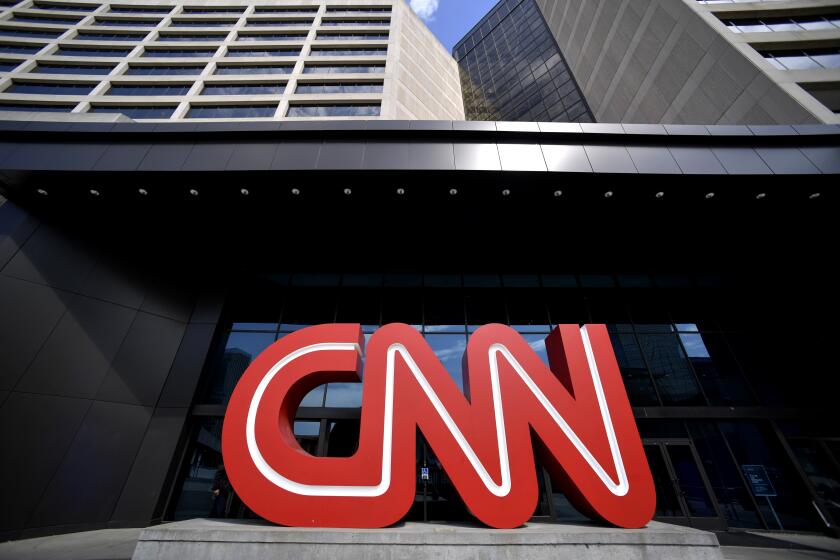Digital Arts Classes Go to Schools
- Share via
Sunday’s Calendar examined how Hollywood heavyweights are challenging Disney’s animation empire. Today’s series conclusion sees how the Hollywood animation boom has stifled the independent movement, which may find its future on the Internet, and how schools prepare students for the digital arts.
*
An old converted electric shop at Hollywood High School could be a model for the high-tech classroom of the future.
In this sparse media lab, students learn the latest in Disney animation software on 35 computers. In an adjacent mini-studio designed by Paramount, they produce multimedia projects on powerful computers and editing equipment. They get feedback from media advisors who have had training on state-of-the-art equipment at major studios.
The Hollywood High lab is an illustration of how the digital-arts industry is building a new relationship with educators--a collaboration that fills needs on both sides.
Visual-effects studios, desperate to speed up the education of a new generation of technicians, are pouring energy and resources into new high school and college technology programs.
The examples to date are few but impressive:
* About 40 entertainment companies are working with Santa Monica College to develop its widely anticipated Academy of Entertainment and Technology, slated to open this fall. The academy will offer programs in computer animation and visual effects, theme park technology, new media and business.
* The Alliance of Motion Picture and Television Producers (AMPTP) has rounded up dozens of studio professionals to help train high school teachers who want to integrate new media into their classes.
* And Paramount, Warner Bros. and Sony Pictures have all opened their digital animation shops to educators who want to see exactly what to teach aspiring animators.
For years, educators and business leaders have been stressing school-to-work transition programs, emphasizing the need for better technical education, particularly in high school and community colleges. Companies in many fields, frustrated by low skills of prospective employees, have made substantial donations to school academies teaching everything from medical technology to welding. The creation of new-media programs like Santa Monica College’s is one of the newest wrinkles in this movement.
“There’s a significant level of self-interest on the part of many companies . . . that this is an area that is not going to get better fast enough unless they get involved,” said Ken Williams, president of Sony’s digital studio division, which donated more than $1 million to create a media center at USC.
Los Angeles city officials are heralding these efforts even as they scramble to figure out how to encourage more of them. Earlier this year, Mayor Richard Riordan announced a goal of creating 15 new media academies to train students in animation and digital arts, and the city’s cultural affairs department is searching for private partnerships to help finance these “electronic arts classrooms.” A pilot project has already started at the Encino Media Center with the help of CalArts and Sony.
When Santa Monica College started developing its entertainment and technology academy last year, it was overwhelmed by the enthusiastic responses.
Eleven studio heads have joined the college’s advisory board for the new academy, offering direction on curriculum and resources as the project moves forward. Many industry leaders said this kind of involvement is not only powered by a desire to help schools, but a real need to cultivate a skilled labor pool.
Local visual-effects studios are increasingly importing foreign animators, special-effects designers and programmers for their burgeoning businesses. A January 1995 AMPTP report examining the needs of the entertainment industry found that new-media studios are suffering from a lack of qualified employees who excel in both the arts and technology. And while a few schools have started developing new curriculum, the report added, many administrators reported trouble getting the programs off the ground.
“We’re desperate,” said R.T. Taylor, education manager at Rhythm & Hues, a digital effects firm that worked on the movie “Babe.” “Because our industry is so involved with increasing the capabilities of what we can do and expanding the workload, we don’t have enough people to call on who have the expertise we need.”
Rhythm & Hues is one of several digital-arts firms that has offered internships to Santa Monica College professors.
Photography professor Larry Jones learned about animated shorts and Sony’s technical training during a six-week internship last winter at Imageworks, the studio’s special-effects arm.
After seeing the need for talented artists in the special-effects field, Jones is crafting a new curriculum for the fall that integrates photography skills with high-tech computer animation--a step he said he couldn’t have taken without seeing the industry’s needs first-hand.
More than 60 high school teachers are in a six-month program organized by AMPTP to prepare them for new-media academies scheduled to open at their schools in the fall.
The teachers--who hail from six Los Angeles-area campuses--take Saturday classes from studio professionals and go on field trips to different studios.
There are already media academies at Palisades Charter High School, Abram Friedman Occupational Center and Hollywood High School, all in the Los Angeles Unified School District.
At Hollywood High’s Media Technology Career Academy, students learn scriptwriting in their English class and produce videos instead of term papers for social sciences.
“We’d been so used to educating kids in one way forever,” said Abbe Shorr, academy coordinator at Hollywood. “Teachers had been afraid to let the kids know more than they did.”
More to Read
The biggest entertainment stories
Get our big stories about Hollywood, film, television, music, arts, culture and more right in your inbox as soon as they publish.
You may occasionally receive promotional content from the Los Angeles Times.










